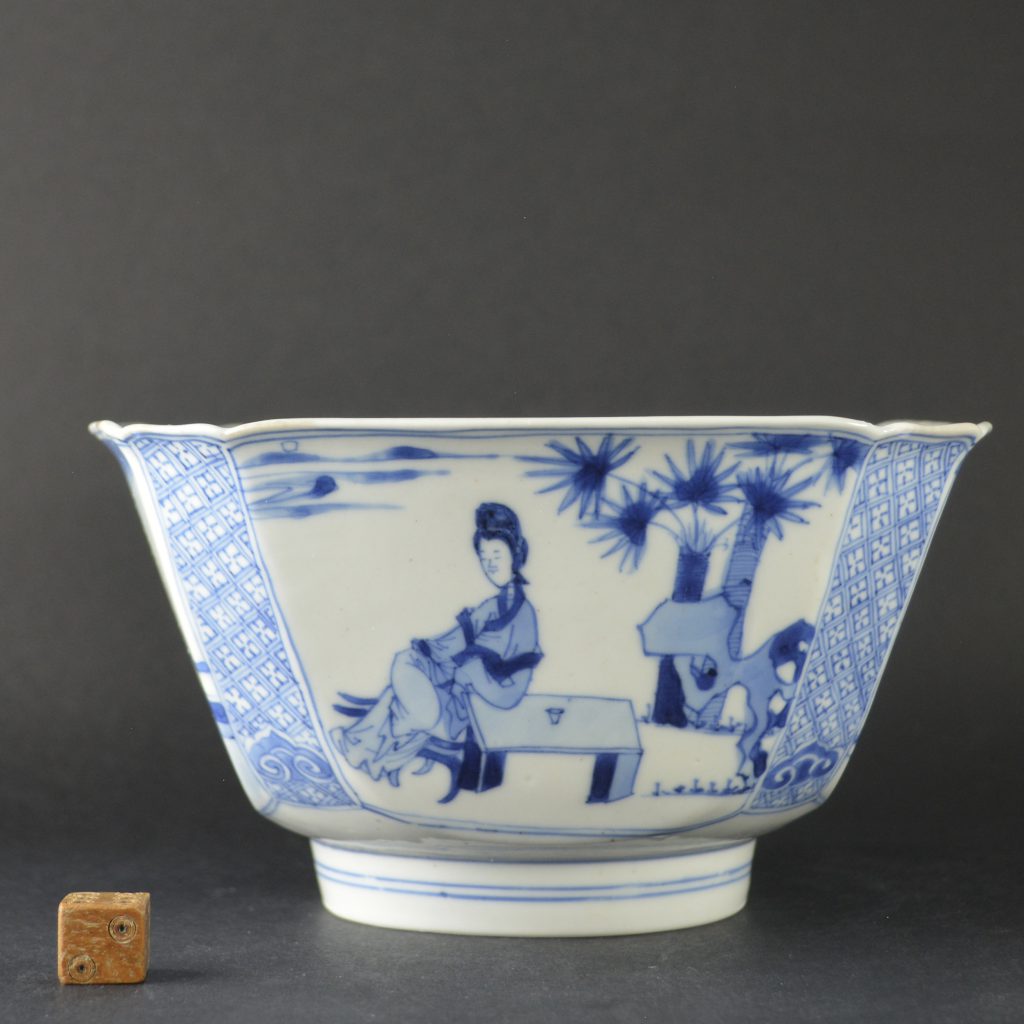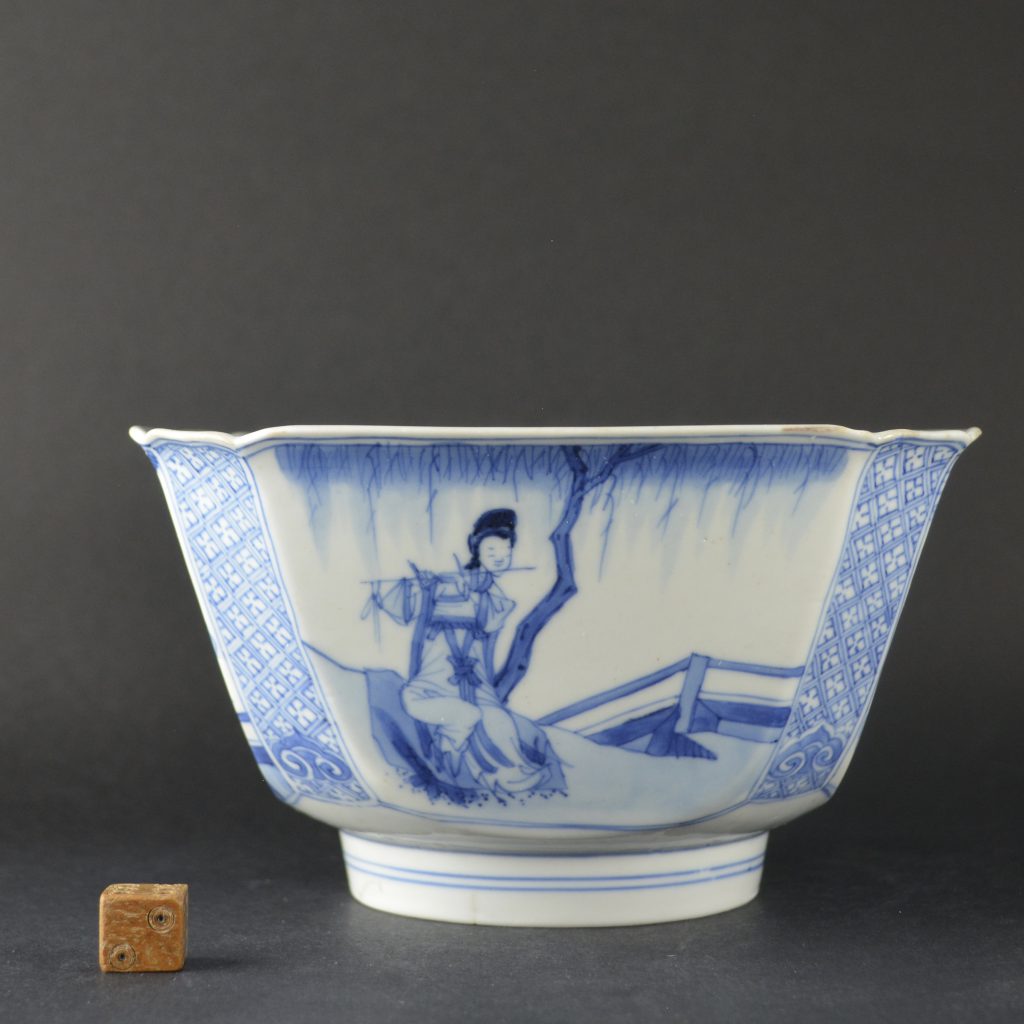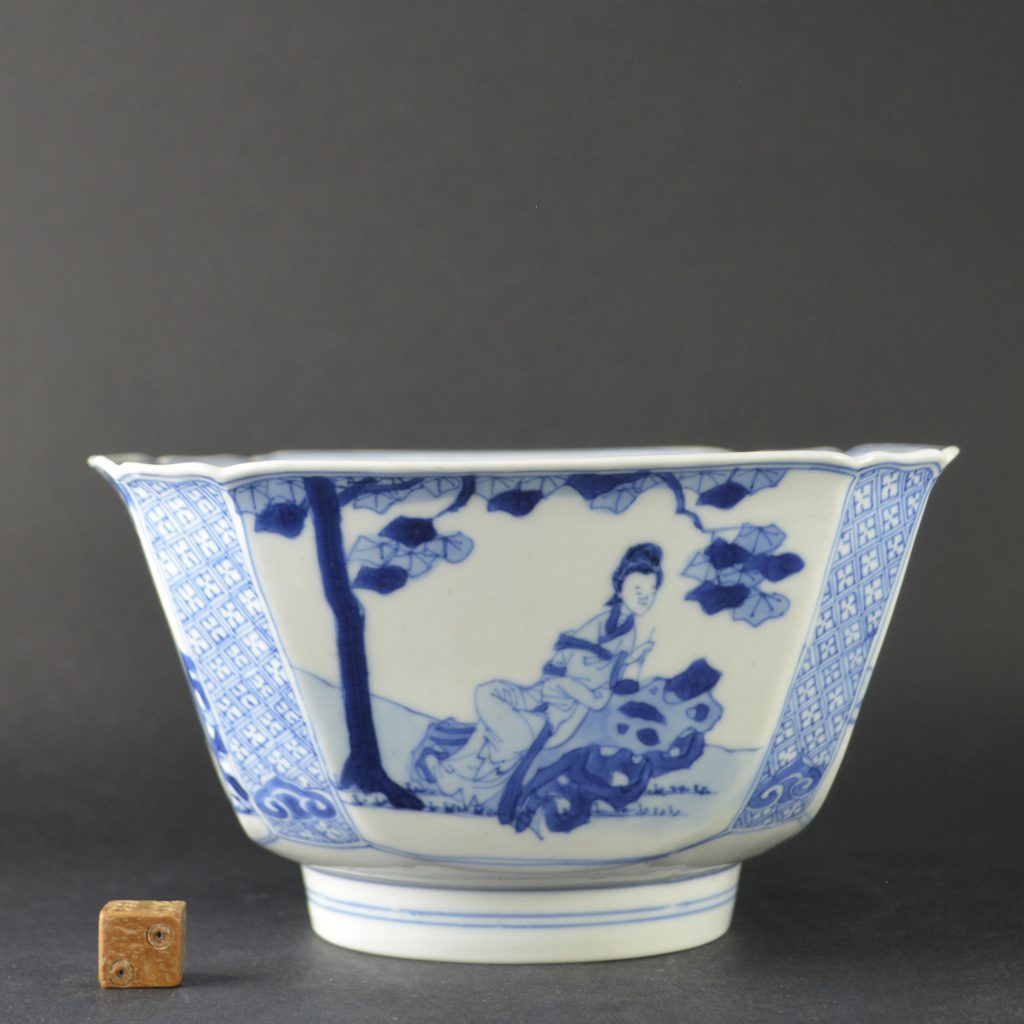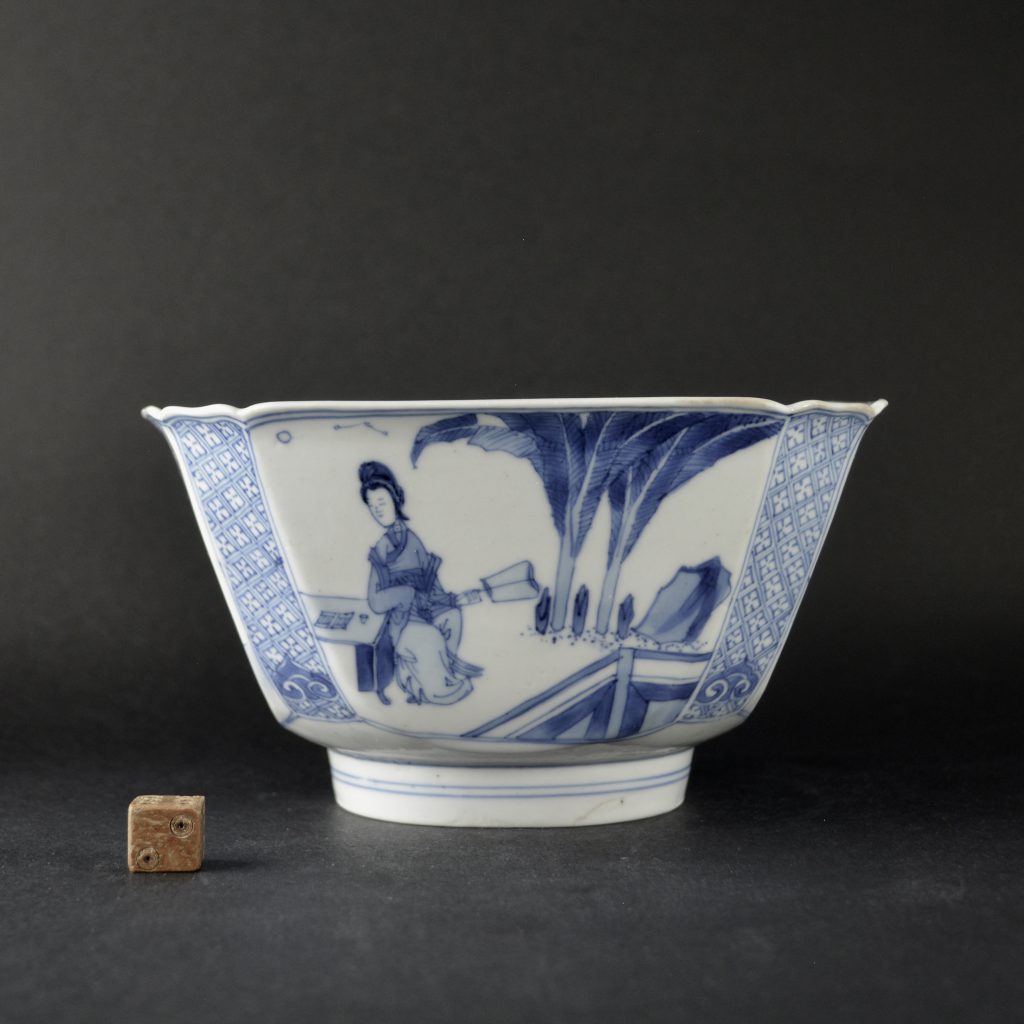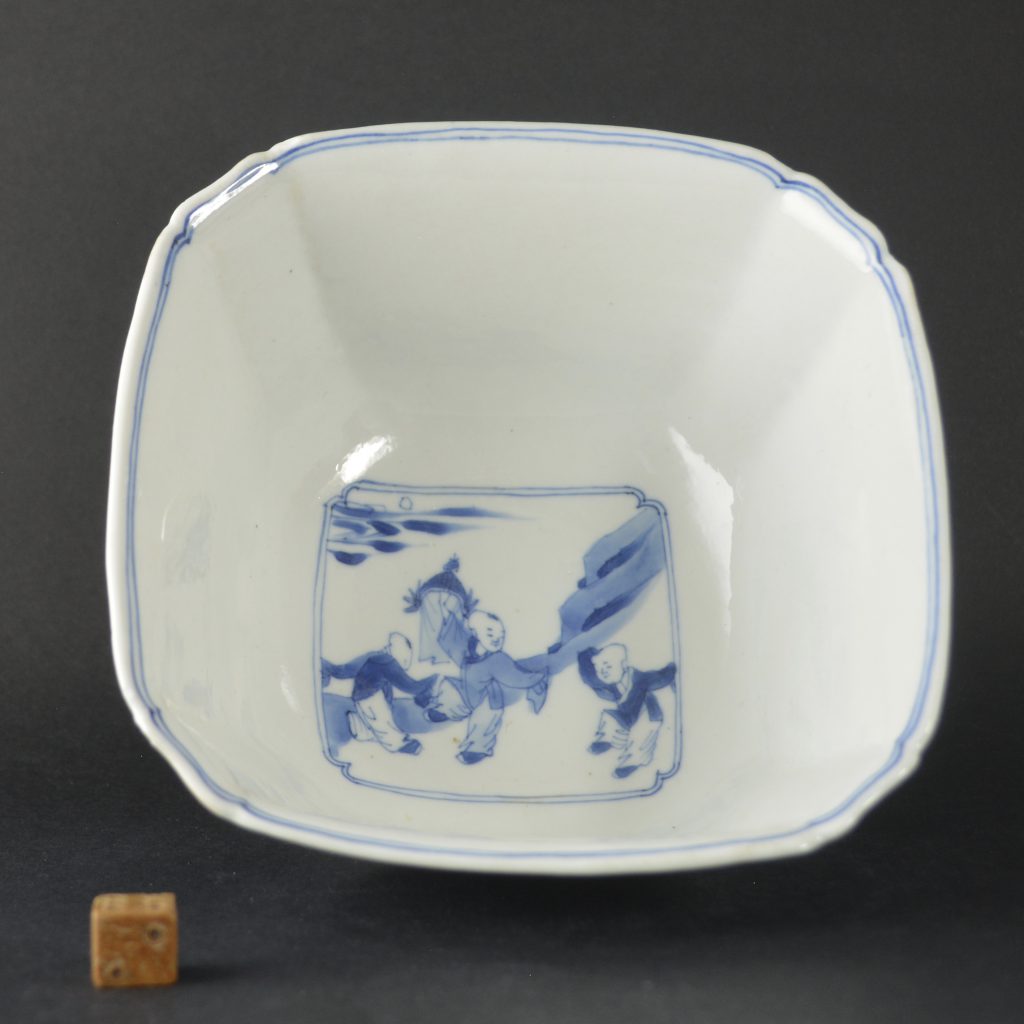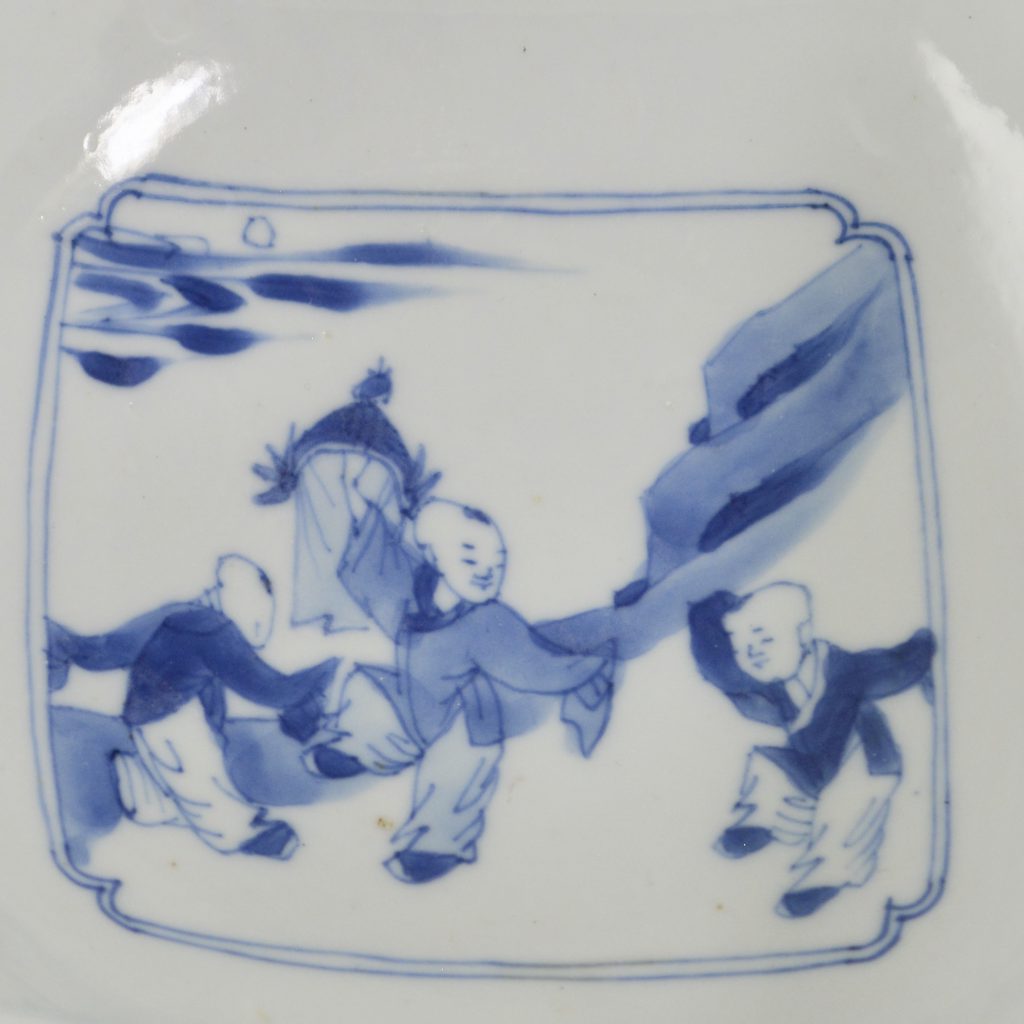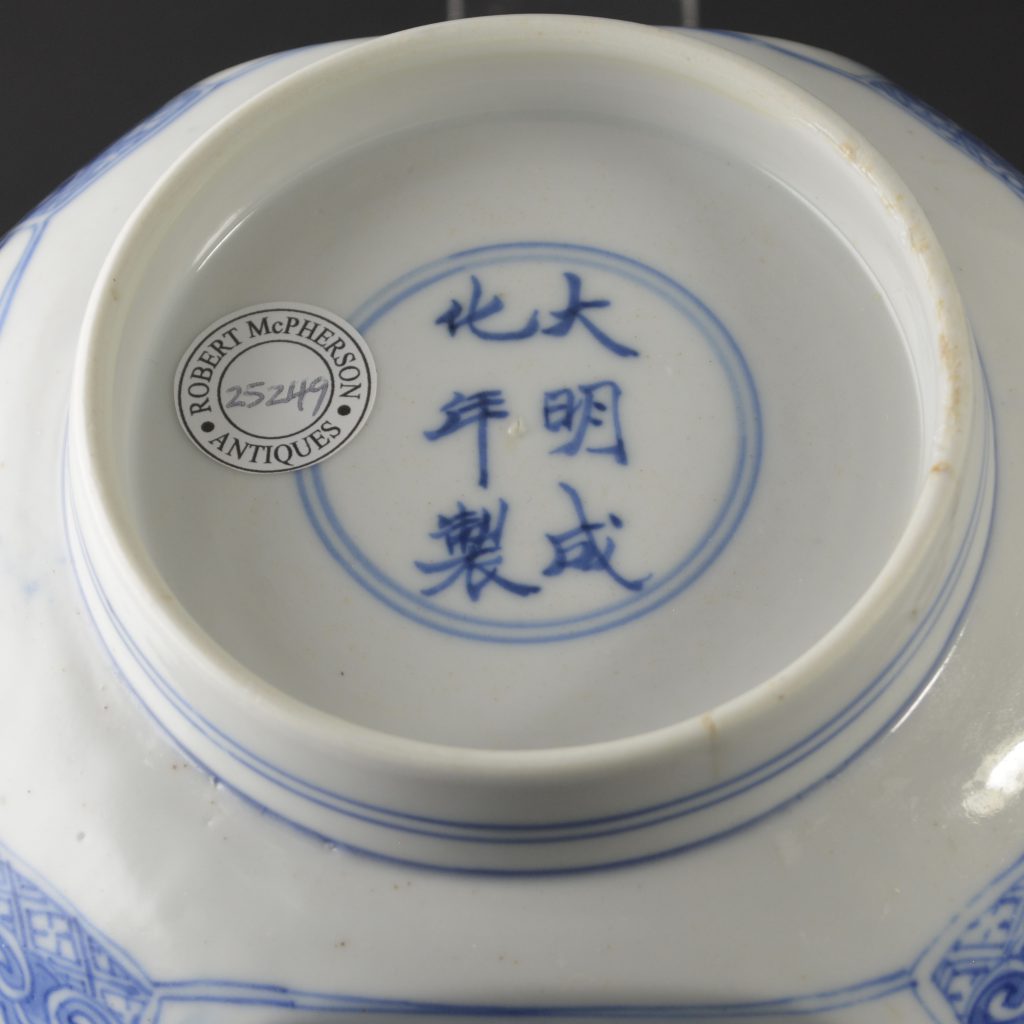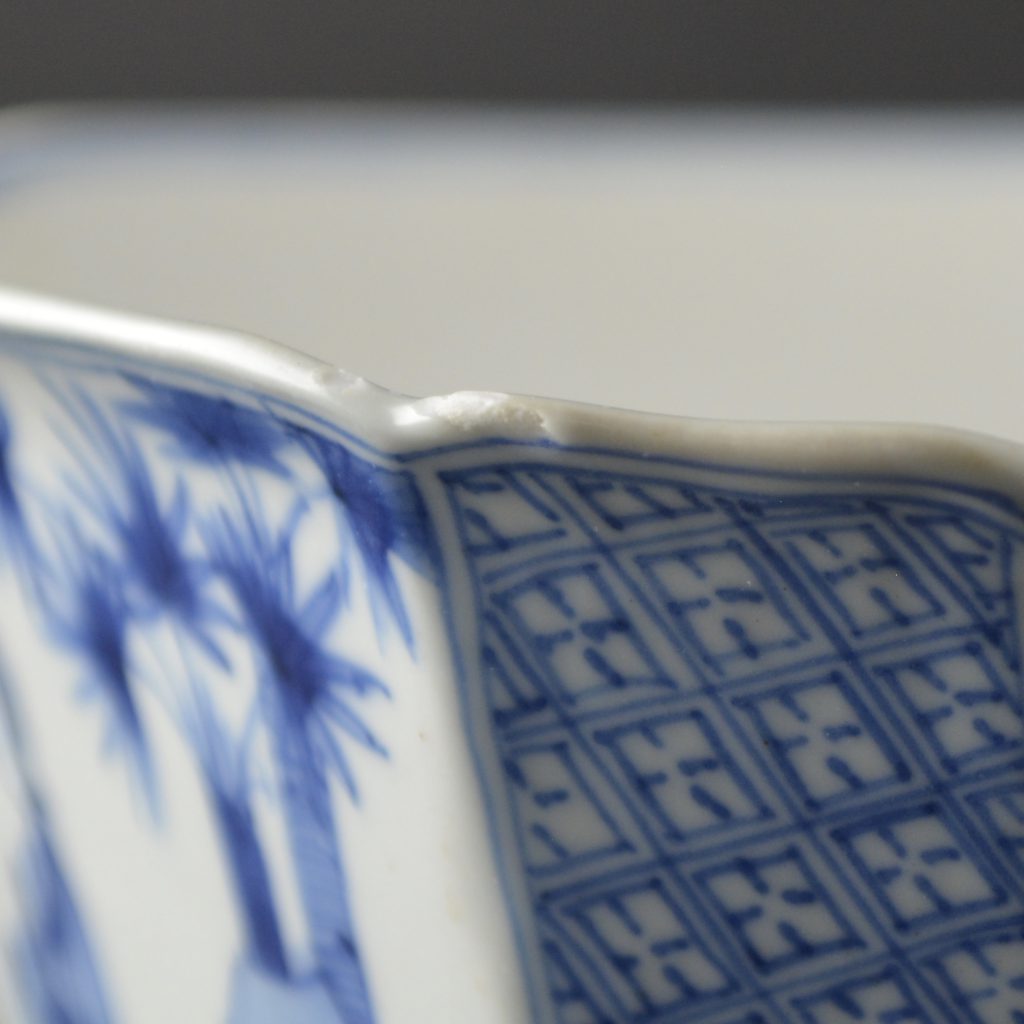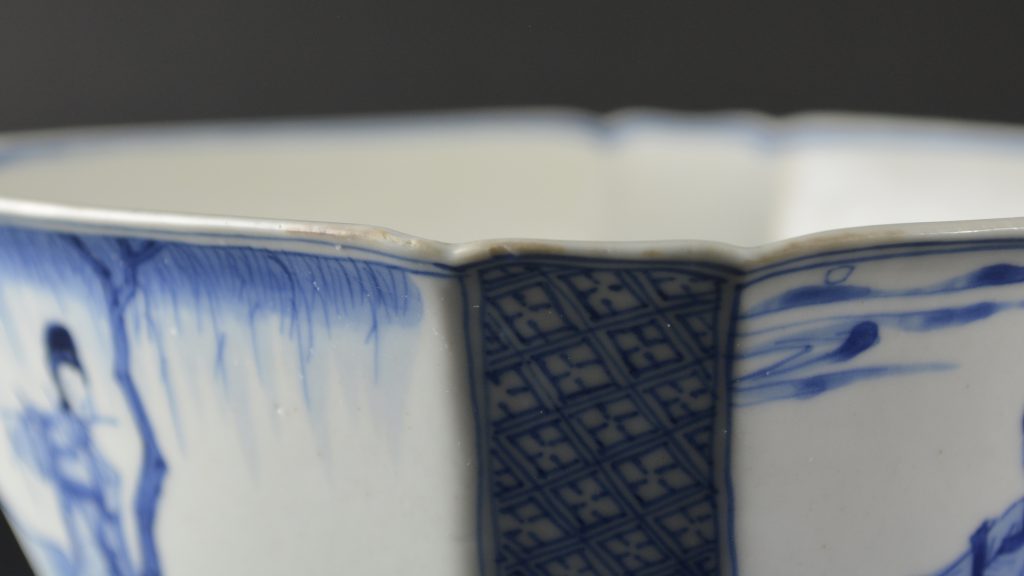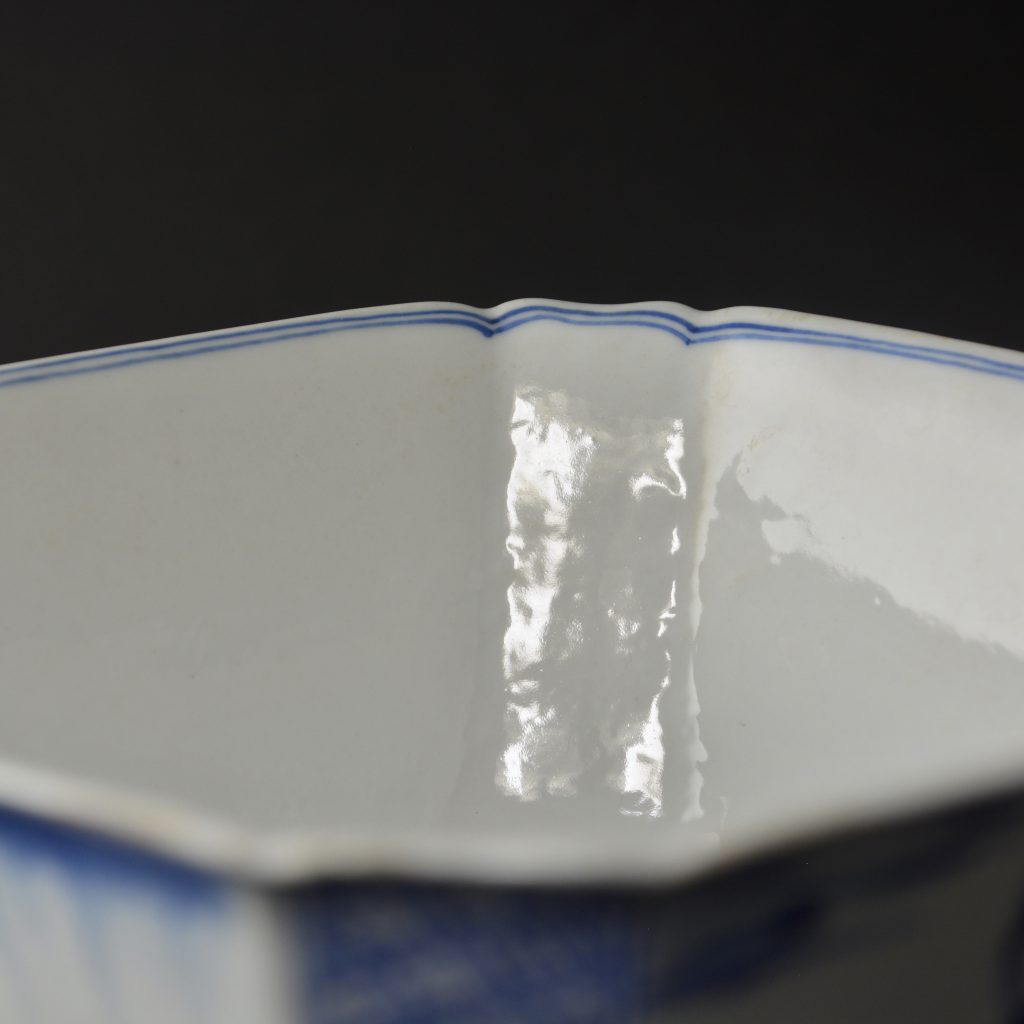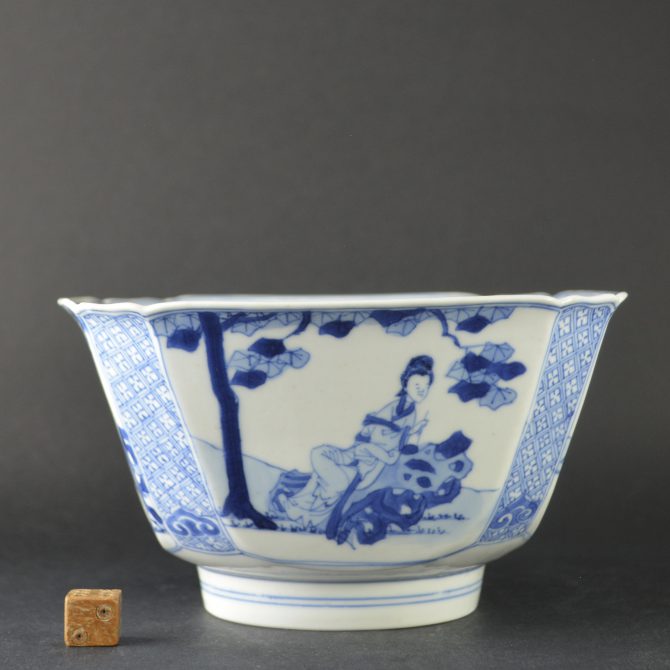
Kangxi Blue and White Porcelain Bowl
A Kangxi Blue and White Porcelain Bowl c.1690-1710, the base with a six-character Chenghua (1465-1487) mark. This canted Kangxi Period (1662-1722) square porcelain bowl is decorated with four panels of ladies at leisure within a garden setting. The panels are divided by diaper borders. The well of this Kangxi bowl is decorated with boys at play. This shape of bowl was popular during the Kangxi period but apart from 19th century copies it is rarely, if ever, encountered.
SOLD
- Condition
- In excellent condition, two very small glaze chips. A few minor stains to the rim. The vertical moulded lines to the interior have very minor staining, perhaps due to firing. Two firing cracks to the foot.
- Size
- Diameter 26.7 cm (6 1/2 inches) Height 8.2 cm (7 1/4 inches)
- Provenance
- N/A
- Stock number
- 25249
Information
Reign Marks on Kangxi Blue and White Porcelain :
Kangxi blue and white export porcelain object are sometimes found with the six character mark of the emperor Kangxi (1662-1722) to the base. These none-imperial reign marks are referred to as minyao in Chinese, denoting them as `popular wares` not destined for court use. However the majority of the marked pieces bare the mark of earlier Ming dynasty emperors, some are Jiajing (1522-1566), occasionally Wanli (1573-1620) but by far the most commonly encountered marks are those of Chenghua (1465-1487). David Howard in `The Choice of the Private Trader` (David S. Howard, Zwemmer, 1994) notes that "The Chenghua mark .... was not intended as a forgery, but rather as a compliment to the quality of the piece and to replace the mark of Kangxi who had forbidden the use of his name on porcelain made for export after 1682; a ban which nominally remained in force until the late 19th century". It appears this ban was not enforced, or if it was only partly enforced, as we have had many Kangxi export pieces made after this date (1682) that bare the six character Kangxi mark. It is worth noting that many 19th century copies of Kangxi blue and white porcelain bare a four character Kangxi mark, something you do not on the original, all Kangxi marks on porcelain of the period were of six character form.
